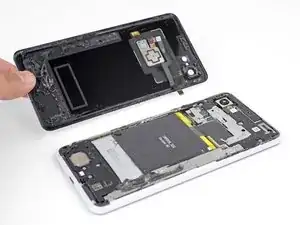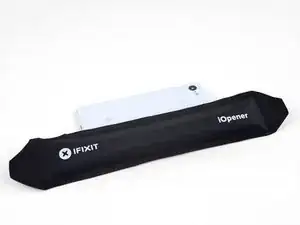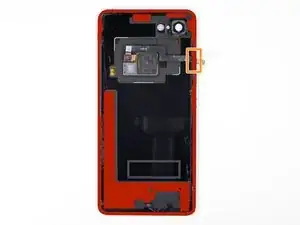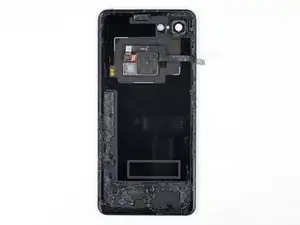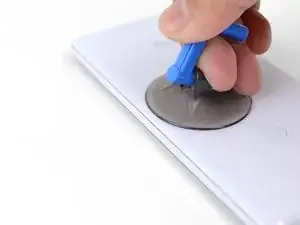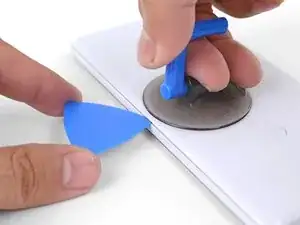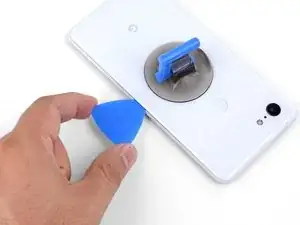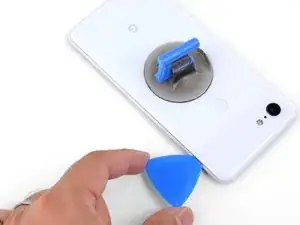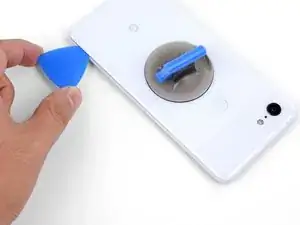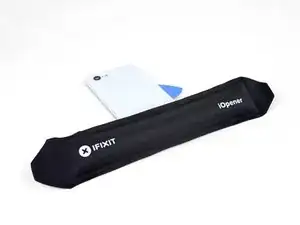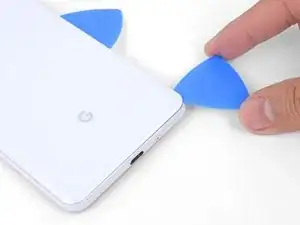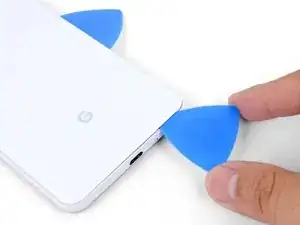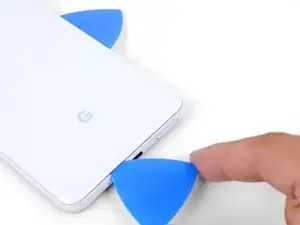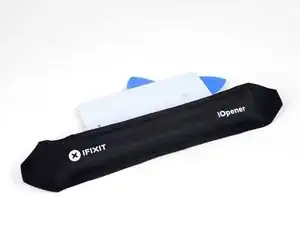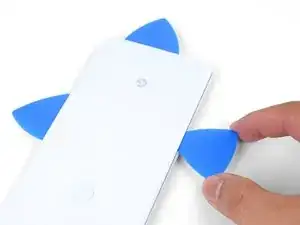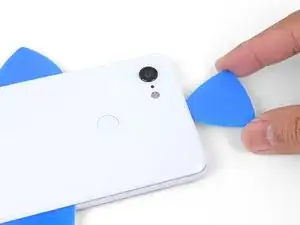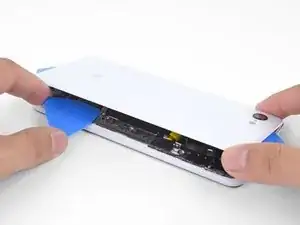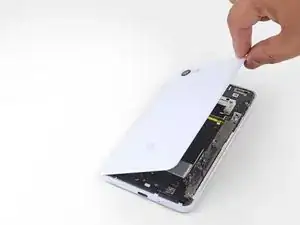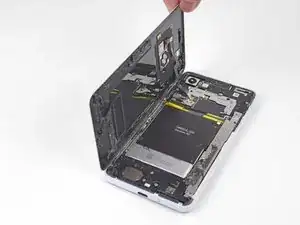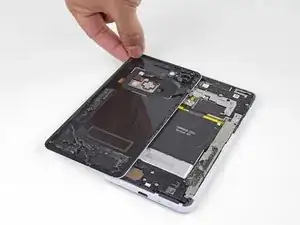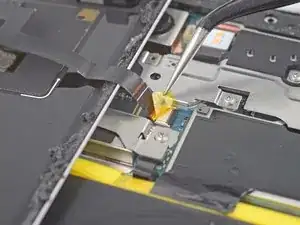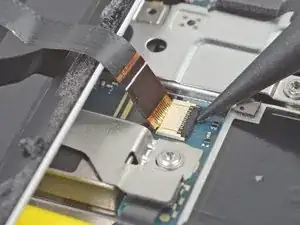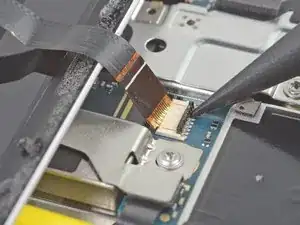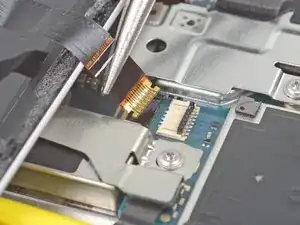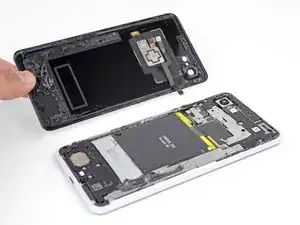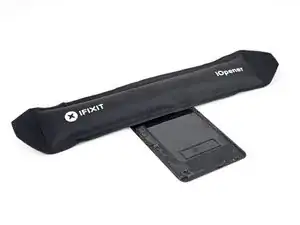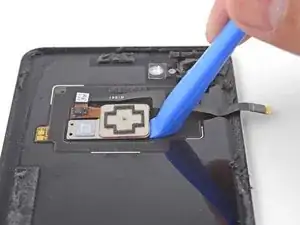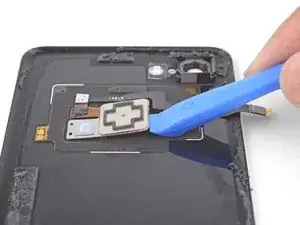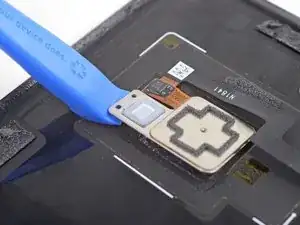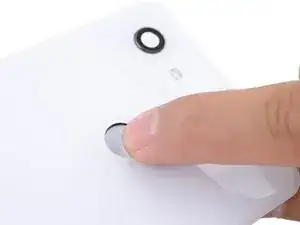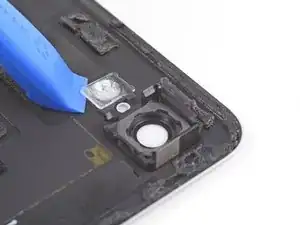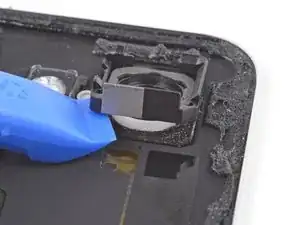Einleitung
Diese Anleitung zeigt, wie die Rückabdeckung des Google Pixel 3 XL ausgetauscht werden kann.
Je nach Ausführung des Ersatzteils musst du eventuell fehlende Teile auf die neue Rückseite übertragen. In der Anleitung sind weitere Schritte zum Umbau des Fingerabdrucksensors, des Blitz-Diffusors und der Kamerahalterung enthalten. Der Umbau oder Austausch der NFC-Antenne wird nicht beschrieben.
Werkzeuge
Ersatzteile
-
-
Erwärme einen iOpener und lege ihn eine Minute lang auf die rechte Kante der Rückabdeckung.
-
Während der Wartezeit kannst du Kenntnis von folgenden Bereiche nehmen:
-
Starker Kleber - unten am Gerät befinden sich große Bereiche mit Kleber.
-
Kabel des Fingerabdrucksensors - achte darauf, beim Hebeln dieses Kabel nicht zu durchschneiden
-
-
-
Setze einen Saugheber auf die erwärmte Kante der Rückabdeckung, und zwar so nah wie möglich am Rand.
-
Ziehe fest und gleichmäßig am Saugheber, um eine Lücke zu schaffen.
-
Je nach Alter deines Smartphones kann das unter Umständen schwierig sein. In diesem Fall ist es hilfreich, die Kante erneut zu erwärmen.
-
Setze die Spitze eines Plektrum in die Lücke.
-
-
-
Schiebe ein Plektrum an der rechten Kante entlang, um den Kleber durchzuschneiden.
-
Der Kleber verklebt beim Abkühlen wieder, dadurch wird das Schneiden schwieriger. Wenn das passiert, musst du die Kante erneut erwärmen.
-
Wenn du die Kante durchgetrennt hast, dann lass ein Plektrum stecken, damit der Kleber nicht wieder anhaftet.
-
-
-
Schiebe ein Plektrum um die untere rechte Ecke und an der Unterkante entlang, um den Kleber zu durchtrennen.
-
Lass das Plektrum in der Kante stecken, damit sich der Kleber nicht wieder verbindet.
-
-
-
Erwärme und durchtrenne den Kleber an den restlichen Kanten.
-
Sei besonders vorsichtig, wenn du die linke Kante durchtrennst. Wenn du das Gefühl hast, dass dein Plektrum im oberen Bereich festhängt, hast du vielleicht den Fingerabdrucksensor erwischt. Ziehe das Plektrum etwas weiter heraus und versuche es erneut.
-
Achte darauf, die dicken Klebestellen im unteren Bereich und an der rechten Kante zu durchtrennen.
-
-
-
Heble vorsichtig die rechte Kante der Rückabdeckung hoch.
-
Zertrenne alle Klebereste an den Kanten mit einem Plektrum.
-
-
-
Klappe die rechte Kante der Rückabdeckung hoch und lege das aufgeklappte Panel auf die linke Seite des Smartphones.
-
-
-
Benutze eine Pinzette, um das gelbe Klebeband auf dem Stecker des Fingerabdrucksensors abzulösen und zu entfernen.
-
-
-
Klappe die schwarze Verriegelung am ZIF-Anschluss des Fingerabdrucksensors mit der Spitze eines Spudgers hoch.
-
Fasse die Lasche des Kabels mit den Fingern oder deiner Pinzette und hole das Kabel vorsichtig aus dem Anschluss heraus.
-
-
-
Setze die Kante eines Öffnungswerkzeugs unter den quadratischen Teil des Fingerabdrucksensors, heble langsam hoch und löse den Fingerabdrucksensor ab.
-
Heble um den ganzen Sensor herum, bis er komplett abgelöst ist.
-
-
-
Setze das flache Ende eines Öffnungswerkzeugs unter den Blitz-Diffusor aus Kunststoff und heble langsam hoch, bis sich der Diffusor löst.
-
Entferne den Diffusor.
-
-
-
Setze die Kante eines Öffnungswerkzeugs unter die Kamerahalterung und heble sie zum Ablösen nach oben.
-
Entferne sie und übertrage sie auf dein Ersatzteil.
-
Vergleiche deine neue Rückseite mit der alten. Möglicherweise musst du weitere Bauteile übertragen oder Schutzfolien abziehen, bevor du sie einbauen kannst.
-
Um dein Gerät wieder zusammen zu setzen, befolge die Anleitung in umgekehrter Reihenfolge.
Entsorge deinen Elektromüll fachgerecht.
Die Reparatur verlief nicht wie geplant? Versuche es mit einigen grundsätzlichen Problemlösungen oder frage in unserem Forum um Hilfe.
10 Kommentare
What’s the flat pice that surrounds the fingerprint sensor? It appears to have two pieces that connect with a terminal on the logic board.
Is it the NFC reader?
Correct! That is the NFC coil.
I successfully installed the screen but accidentally broke off the gold tab sticking up from the mother board shield. It can be seen on the picture of step 11 next to the NFC connectors. Do you know what this is for and how it will affect the function of the phone?
Hi Sal!
That tab looks to be a grounding clip, which would normally touch the fingerprint sensor bracket. I don’t think it is vital for daily function.
I don’t see it addressed in the breakdown but how do you remove the NFC reader from the old back cover ?
Hey Kevin!
The NFC coil is lightly adhered to the back cover. Slowly and carefully peel it off the back cover. You can either apply a heated iOpener or some high-concentration (over 90%) isopropyl alcohol to help loosen the adhesive.
